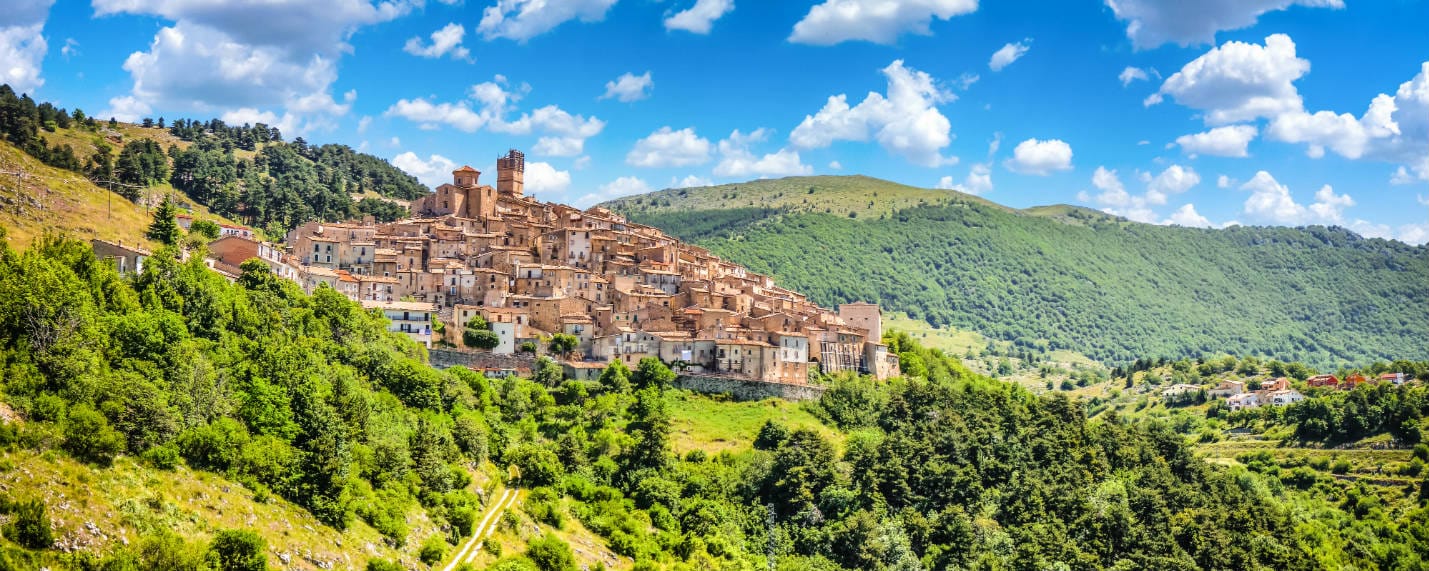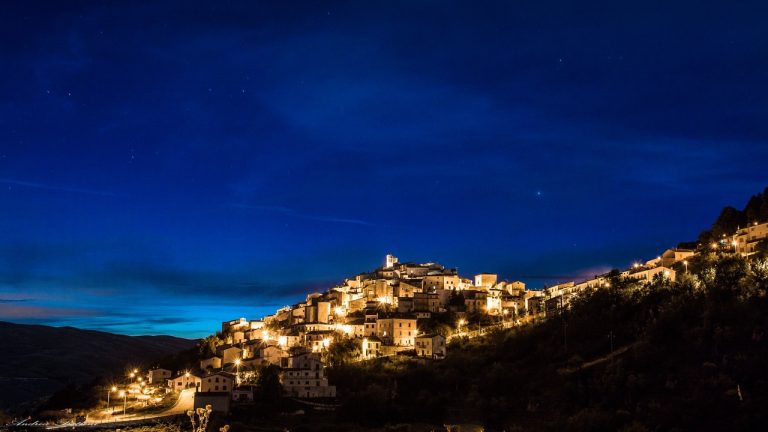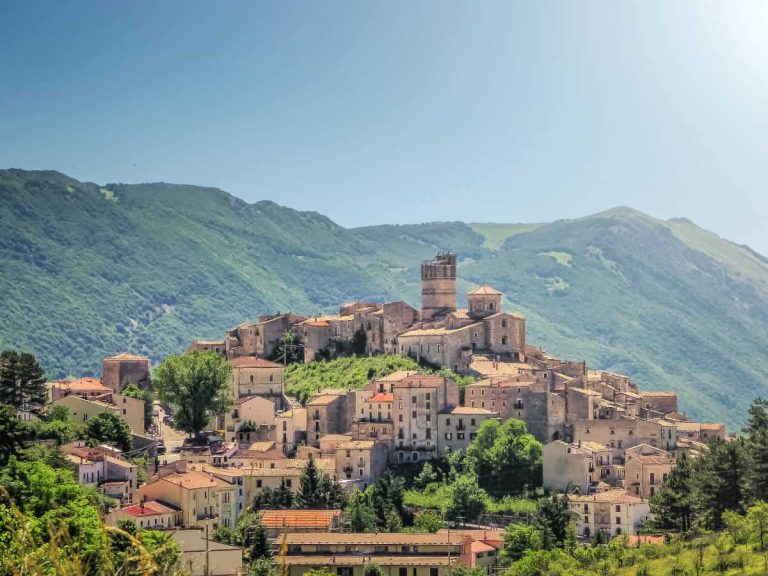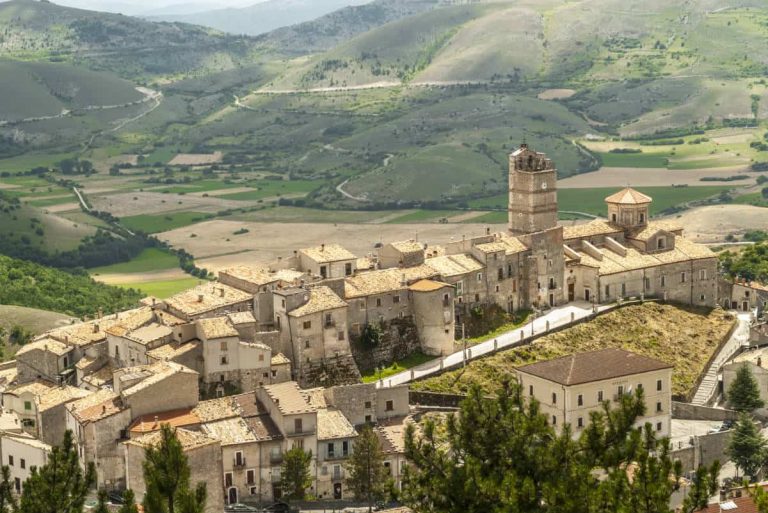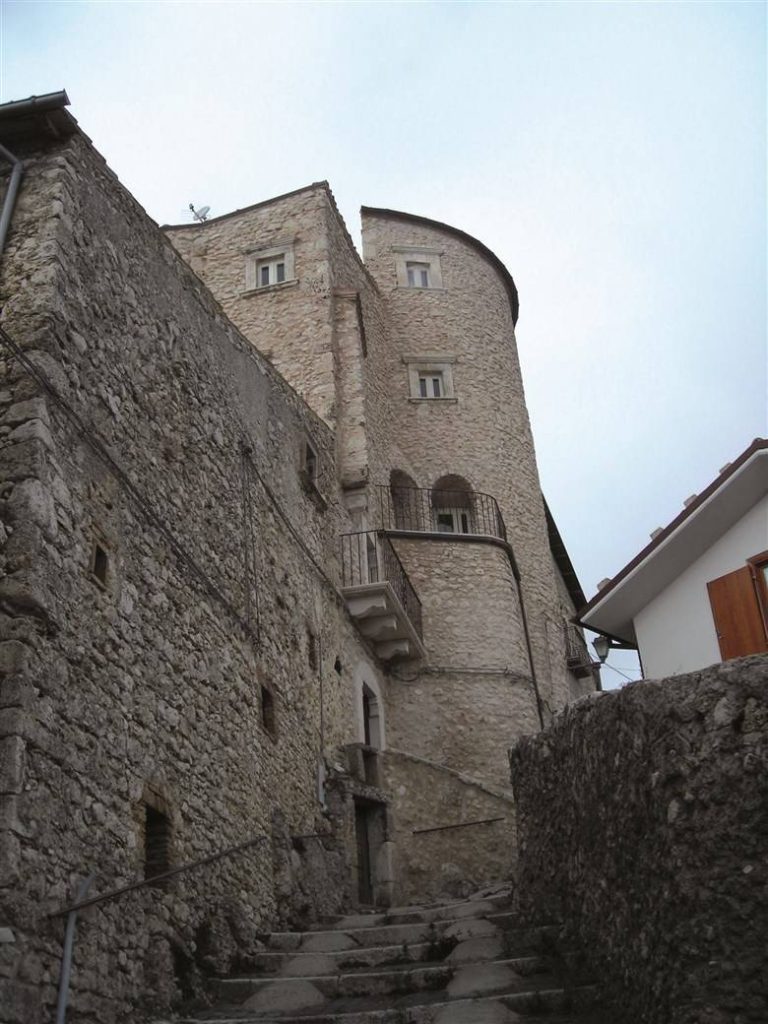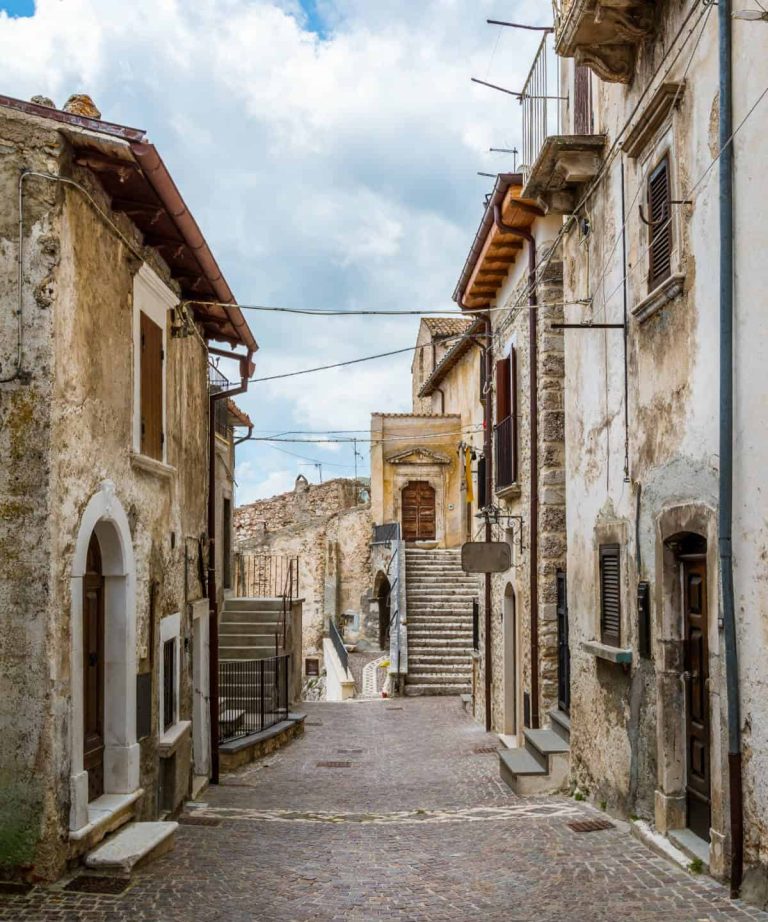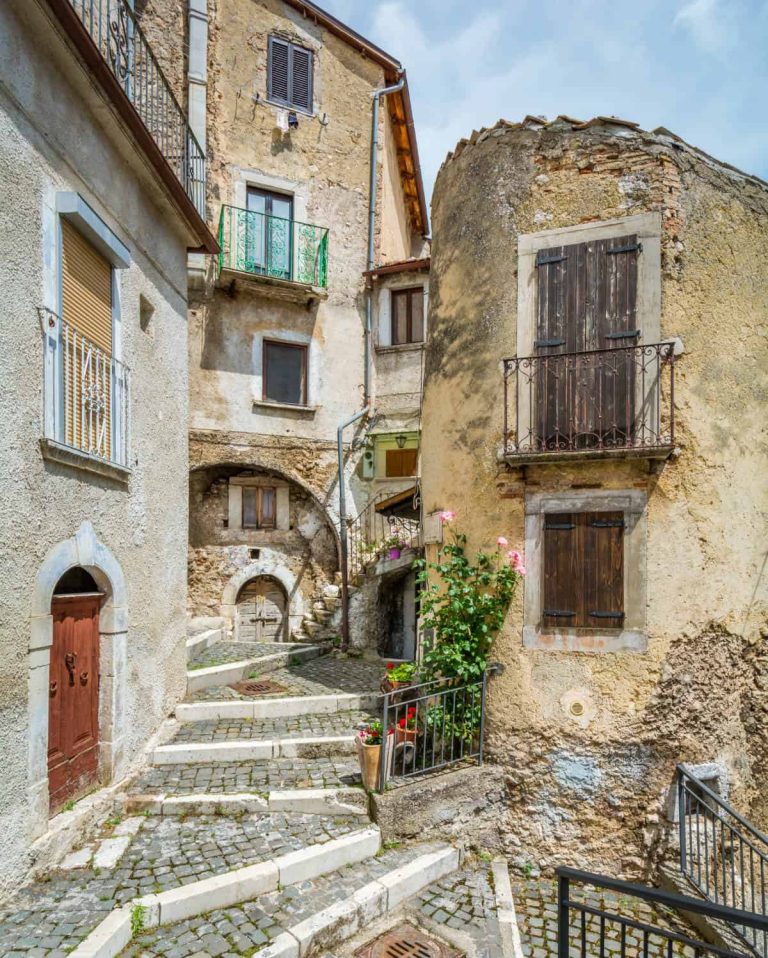Historical background
The village of Castel del Monte is located within the Gran Sasso National Park in Abruzzo. The oldest evidence of its existence dates back to the 11th century B.C. in the nearby San Marco plain, south of the village. Later, the inhabitants moved to the fortified village that today takes the name Ricetto, or the oldest part of Castel del Monte, near the watchtower, later converted into a bell tower. In the 12th century Castel del Monte, one of the capitals of transhumance in Abruzzo, was one of the eight settlements constituting the Terra or Baronia of Ofena. The earliest papal bulls mention only the church of San Marco in Ofena (to be interpreted as S. Marco di Castel del Monte), while the name Castellum de Monte appears for the first time in the papal bull of 1223. In the 15th century it was part of the marquisate (principality since 1584) of Capestrano along with Ofena and Villa Santa Lucia. The town followed the events of the Terra di Ofena and passed to the Acquaviva in 1283, to the Todeschini Piccolomini in 1478, to Ottavio Cattaneo in 1569 and finally to the Medici in 1579. When Anna Maria Luisa died without heirs in 1743, the principality of Capestrano passed as an allodial state, together with the barony of Carapelle, to the Bourbons of Naples. Finally, in 1861, with the Unification of Italy it acquired the status of an autonomous municipality and was included in the province of Aquila degli Abruzzi (later L'Aquila).
The village
Castel del Monte is characterized by its beautiful and perfectly preserved medieval core. The architecture is dominated by the tower-house type, with a structure similar to a masonry tower, with a very small base and considerable development in height (five or six floors). Definitely worth a visit are the village churches including Church of St. Mark the Evangelist, the oldest in the village. In Castel del Monte there is also a museum itinerary dedicated to local history and tradition.
Its proximity, to the north, to the Campo Imperatore plain via the Capo la Serra pass has fostered pastoralism, which has been the backbone of the village's economy for centuries. Indeed, Castel del Monte is one of the symbolic places of transhumance. Among the most traditional, widespread and renowned economic activities are handicrafts of wooden furniture and wool products and livestock activities, including the production of Canestrato sheep's milk cheese.

